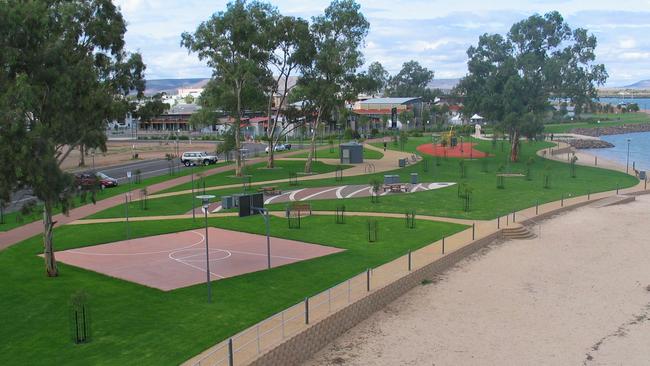SA government will pursue sewer mining to water local parks and street trees
Councils across SA can take a leaf out of Port Augusta’s book and tap into sewers to water gardens. It’s called sewer mining and the state government is up for it.
SA News
Don't miss out on the headlines from SA News. Followed categories will be added to My News.
Sewer mining will become just another way to shore up water supplies, as the state government puts “all options on the table” as the climate changes.
This involves “tapping into a sewer line to divert or extract wastewater, which is then extensively treated to produce high quality water that can be used locally”, as described in the Department for Environment and Water’s new 28-page Urban Water Directions statement.
Port Augusta council has shown how it’s done, using sewer mining to access untreated wastewater from the nearby SA Water sewage pump station.
Once treated on site at Central Oval, the water is used to irrigate green spaces including the foreshore, oval and other parks and gardens.
Environment and Water Minister David Speirs said, “a warming and drying climate – coupled with ageing assets and increased demands for greening and growth – mean that we need to be smarter about our future urban water use.
“Maximising the use of all available water sources, particularly those that are climate independent, will be increasingly important for … urban water supplies.”
SA Water agrees, saying “localised sewer mining will likely play a role … as we shape and enable diverse, fit-for-purpose water solutions to secure water for the future”.
“Sewer mining enables small-scale, localised water recycling at or near the intersection of an existing sewer network and the intended point of end use,” a spokesman said.
“(This is) as opposed to large-scale centralised treatment operations, which then require a distribution (pipe) network to move the recycled water to the point of end use.”

Sewer mining may be a cheaper option because long pipelines for recycled water distribution are expensive. It’s also handy to access a steady supply of water where it will be used.
Recycled water is mainly used for irrigation of parks and reserves, but a state government spokesman said it could also be used “to support greening and street trees ... (or) for industrial purposes, provided the quality was suitable for the end use”.
“With increased demands for greening and cooling, there will be increased water demands, with more water required for healthy plant growth that provides the maximum cooling benefits,” he said.
SA Water is a leader in water recycling. On average, 30 billion litres (gigalitres) or just under a third of all treated wastewater from Adelaide’s sewage treatment plants is reused every year.
Treated wastewater from Bolivar supplies growers on the northern Adelaide plains. Homes in Mawson Lakes, Bowden and Seaford receive treated wastewater through purple pipes.
Recycled water treated from Christies Beach is supplied for irrigation in McLaren Vale and for toilet flushing in Seaford Meadows and Seaford Heights.
More than 1.3 billion litres (gigalitres) of recycled water from Glenelg is used in and around the Adelaide CBD including the parklands.





